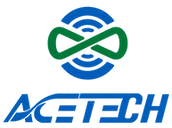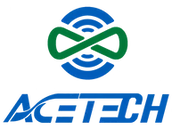
Inquiry
Global Solar Module Prices Stabilize as Markets Calm Toward Year-End
FOB CHINA: In the China Module Market (CMM), OPIS' benchmark assessment of China's TOPCon modules stabilized this week at $0.087/watt, FOB China, with price indications ranging from $0.083-$0.095/watt.
The solar industry is still processing the effects of a recent “self-regulatory agreement” signed by over 30 Chinese solar companies. This pact aims to stabilize solar module prices by controlling supply amid a stagnating market. “Most module makers are probably operating at 50-70 percent capacity now, down from 80 percent last year. Weak demand continues to depress prices,” one producer noted.
Despite these efforts, TOPCon module prices show little sign of rebounding. A top-five module producer told OPIS that “strong sales pressure” and the need to clear old inventories are blocking meaningful price increases through at least mid-2025. While the government pushes manufacturers to reduce capacity in the coming months, high inventory levels and sluggish turnover rates are expected to keep solar module prices low.
DDP Europe: In Europe, TOPCon module prices edged up by 1.00%, with the average OPIS-assessed price reaching €0.099/watt ($0.102). Prices for Tier 1 panels ranged from a low of €0.075/watt to a high of €0.115/watt.
Sources attribute the slight uptick to low component demand and heavy selling in recent months, which had previously driven prices down. Still, they predict a modest rise in DDP European panel values by late December. Meanwhile, Freightos reported a 5.13% drop in freight rates on the China/East Asia-North Europe route, now at $5,051 per 40-foot equivalent unit (FEU), or $0.00126 per watt.
U.S. DDP: In the U.S., solar module prices held steady this week, with OPIS assessing utility-scale TOPCon modules at $0.285/watt on the spot market. Forward indicators show a Q1 2025 delivery price of $0.293/watt, compared to $0.282/watt for Mono PERC modules.
Developers are racing to secure module inventory before year-end to qualify for the 2024 Investment Tax Credit (ITC), amid fears that the incoming Trump administration might alter incentives. Orders placed soon must be delivered within three and a half months, one source explained. A dealer noted rapid inventory turnover but added that if ITC changes occur in 2025, developers should still have time to bond projects for eligibility before new tax laws take effect, possibly later this year.
The U.S. Department of Commerce’s late November preliminary anti-dumping ruling continues to fuel market buzz, driving price hikes. A distributor source told OPIS that customers were quoting around $0.41/watt for utility-scale TOPCon modules delivered in Q1, particularly from suppliers facing high cash deposit rates.
While some expect non-principal companies to raise prices opportunistically, skepticism persists. A major developer argued that sufficient capacity exists outside the four affected countries and within the U.S. to meet annual demand of about 40 GW. “That pain could be short-lived,” he said, noting major suppliers’ plans to launch battery plants elsewhere. A dealer observed slight price increases in Indonesia and Laos—up a few cents—but said significant shifts remain limited, as prices there hovered in the low teens and 20s before the ruling.
As the solar market navigates these shifts, companies like ACE Battery are poised to play a key role, offering innovative energy storage solutions to complement the evolving solar module landscape.
Our expert will reach you out if you have any questions!
